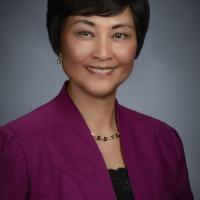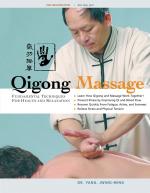Eastern vs. Western Massage
Chinese massage is very different from Western massage. It is much more strenuous and powerful. It is deeply penetrating and goes into the acupuncture points and meridians, activating the Qi and Blood, and promoting circulation to speed the healing process.
Besides helping with many kinds of ailments, TCM massage is well known for helping with joint and muscle problems. TCM massage is used to assist internal healing, too (due to its effect on the energy channels). Chinese massage is so-called because the massage is applied chiefly to acupuncture points and meridians, which are all based on TCM theory.
In China years ago, massage therapy was usually performed by doctors in a hospital. In China now, due to increased demand, there are many training centers for massage therapists, but a massage therapist is not the same as a massage doctor who works in a hospital treating illness.
In China, most trained massage therapists perform Chinese massage more for health maintenance and focus less on treating illness, whereas the massage doctors in China work on patients primarily to relieve their ailments. To be able to treat illness, the massage therapists need to have a vast knowledge of physiology, anatomy, TCM theory, and clinical experience, including biochemistry.
Sometimes chiropractor's manipulations are also applied by Chinese massage doctors. These manipulations are clearly described in numerous Chinese massage books. Chinese massage can help heal ailments, both internal and external, and it is a good therapy for health maintenance. Chinese massage is safe and enjoyable, and Chinese patients can tolerate the manipulation. Patients may feel pain when their problems are severe; but after being treated regularly, they feel much better. Practitioners oftentimes perform various techniques, including joint movement and range of motion. Chinese massage can be applied to patients of any age including seniors and pregnant women.
Chinese massage can be a substitute for acupuncture. I have been using Chinese massage for pediatric care for quite a while and observed the fact that kids respond very well. Ailments that can be relieved by Chinese massage include headache, insomnia, asthma, indigestion, injury, bowel, back, and neck problems, stiffness, fibromyalgia, mild or moderate hypertension, diabetes, etc. Best of all is the good feeling that comes with this caring and loving therapy.
In the United States, it is not easy to find a well-trained Chinese massage doctor because there is no professional training school for this kind of therapy. Most massage schools teach regular massage, but only provide a little information on the oriental massage techniques.
Dr. Kuhn's Personal Experience with Tui Na
In 2001, I took a group of Americans to China. We went to a rural mountain area, and hiked to the top of a mountain. While hiking, we had to carry backpacks so that our shoulders and backs hurt very much. Later that evening (after we returned to the hotel), I had a Chinese massage. The person doing the massage was trained as a TCM doctor with a massage specialty; he was only five-feet-three-inches tall. During the massage, I felt the tremendous force from his hands. It was painful, I even screamed, but he did not hesitate and went on with his work, the kind smile never leaving his face. The next day, both my shoulders and my back felt much better. The Chinese massage might not be comfortable at the moment, but it certainly helps relieve your problems. Each time I take my students, patients, or other Americans to China, I want them to experience the unique healing benefits of Chinese massage. In the United States, Chinese massage needs to be modified with lighter manipulation because many people could not otherwise tolerate the massage's discomfort.
Ways That Chinese Massage Works
- It works on the meridian system; it connects the upper and lower body, as well as the internal and external body.
- The strong and penetrating techniques stimulate Qi and blood circulation, which helps to break blockages, nourishes the whole body, and helps alleviate illness.
- It is related to nerve response: For example, acupuncture and massage can relieve pain due to endorphin and serotonin level changes in the brain, and changes in the potassium level between, inside, and outside cells.
- Chemical changes in the body (biochemical and neurochemical) occur due to stimulation of the energy passages.
- Changes in the autonomic nervous system.
For example, putting pressure on the Yen Zhong point results in a cardiovascular response; this stimulates the sympathetic nervous system. Putting pressure on the Zhu San Li point results in a gastrointestinal response that stimulates the parasympathetic nerve system. Another point, called Yang Xi, results in an anti-parasympathetic nervous system response.
Self-Massage for Good Health
Self-massage is another self-healing technique used by many Chinese people. It is a convenient and cost effective way to maintain good health. Many people use self-massage to help themselves and their family. It helps to boost the immune system, increase energy, and enhance the self-healing ability.
Picture yourself on an airplane. You begin to suffer from nausea or a headache, and you do not have any medication with you. If you know how to do self-massage, you can help yourself to relieve the discomfort.
Massage Relief for Neck Problems, Stress, Headache
- Put one hand across behind the neck, using fingers to massage the opposite side next to the muscle that is next to the cervical vertebrae. Use kneading, pressing methods. Start at bottom of scalp, gradually moving down to shoulder along the neck. Massage for 2 or 3 minutes, and then do opposite side.
- Using forefinger and middle finger under scalp, 1.5 inches from middle line, using rotational pressure, massage this area for 3 minutes.
- Circle both shoulders backwards 8 times, and then circle both shoulders forward 8 times. Then hold both shoulders up for one deep inhale and make the shoulders tight, then drop the shoulders and relax the whole body while exhaling.
- Neck exercise: slowly move the head in four directions, to the left, to the right, upward, and then downward.
- Hold head down with hand at 45-degree angle; press down with moderate pressure, and after 1 minute, switch to the other side. Now, with the head centered, hold head down with both hands and apply moderate pressure.
- Using the opposite hand, massage shoulder muscles by crossing the arms across the chest.
- Lie down on a bed and move so your head hangs slightly from the edge of the bed. Let gravity pull down on your head providing natural neck traction. Do this for 1 minute.
Sitting Massage for Gastrointestinal Ailments, Gassy stomach, Indigestion:
- Put hands over the upper stomach area (women, put right hand under left hand; men, put left hand under right hand); using rotational pressure, massage the upper stomach counterclockwise (to follow the colon pathway) for 2 or 3 minutes.
- Leg point: Put right hand over left kneecap, your index finger is between the end of the kneecap and press the lateral tibia (shinbone) under the knee at the indent; the tip of the index finger is at the point you massage. Use pressing and kneading methods for 3 minutes. Then massage opposite leg, using same method to find the correct point on the other leg.
- Massage the area under the knee joint at the inner part of the leg next to the shinbone; if you feel a little pain when you massage it, you will know if you have found the correct point.
- Put hands in the front of your chest. Men, put left hand under right hand; women, put right hand under left hand. Push down with pressure along the middle line of the front body 8 times; breathe out when you push down.
- Alternately swing body (turn waist and torso, keep legs still) side-to-side 16 times.
(This excerpt is from Simple Chinese Medicine: A Beginner's Guide to Natural Healing & Well Being by Dr. Aihan Kuhn)







